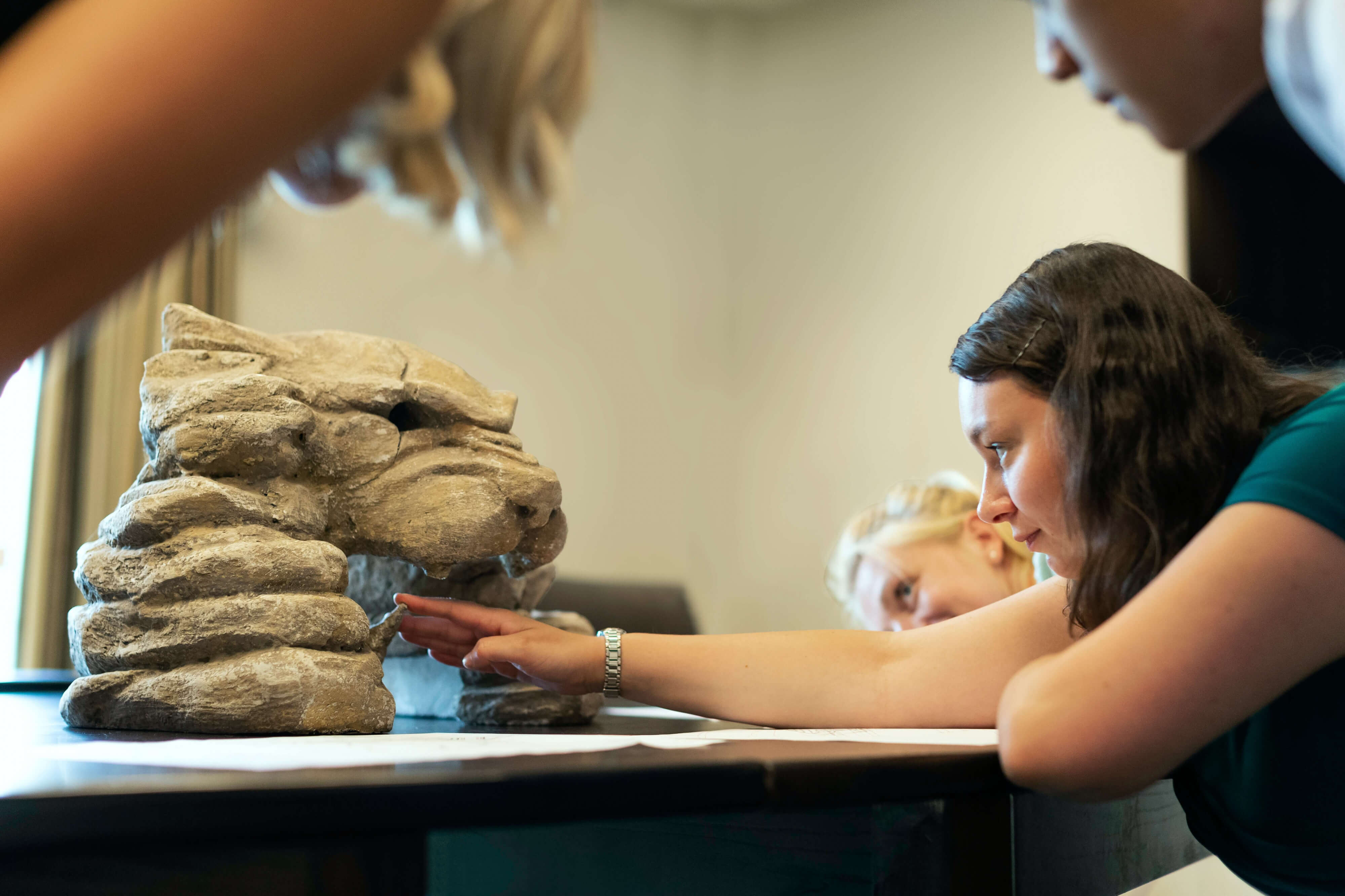“Shock and awe”
Nothing else better describes how a child reacts when they first peek through a microscope’s lens.
"Shock" as these tools reveal realities that their eyes never could.
And "awe," because this brief point of awestruck may kickstart a never-ending wonderment to understand the world a little better.
The development of intense obsessions is entirely normal for children. Typically, these passions eventually fade, but it can sometimes be an enduring love that even influences their professions.
So if you have a child that loves microscopes, or if you’re considering the futuristic merits of buying your child one, you’ll find here the highest-paying STEM careers that kids who love microscopes may potentially pursue.
RELATED: How are Microscopes Helpful for Children?
Can toys influence a child’s career path?
“Curiosity turns to interests, interests become passions, and passions greatly influence a person’s career path.”
Realistically, a person’s decisions are merely a subset of their cognitive biases, situation, and personal experiences.
If we learn to harness a child’s experiences using the right tools, say a kids' microscope, we can possibly steer their passions towards productive ends. As U.K.’s former Minister of Education Elizabeth Truss warned that toys are instrumental in affecting children’s careers.
That said, an innocent interest in microscopes today may enrich their love for science and set kids up for success tomorrow.
So, here are the highest-paying STEM jobs that are up-for-grabs for your microscope-loving child.
Lucrative Careers for Microscope-loving Kids!
1) Microbiologists
-
Median Salary: $84,400
-
Required degree: Master’s degree
-
Best college major: Biology
When you talk about careers that use microscopes, one thing primarily comes to mind: microbiology.
The name itself bears the glory of exploring microscopic life. And the most exploited tool in a microbiologist’s arsenal is a microscope.
Although given the intricate nature of the occupation, these scientists use more sophisticated devices than what we’re used to in high school.
Microbiologists study various microorganisms like bacteria, fungi, and viruses to understand how they live and interact with the environment. With the uprise of microorganism-borne diseases, there will undoubtedly be a rise in demand for microbiologists.
2) Epidemiologists
-
Median Salary: $74,560
-
Required degree: Master’s degree
-
Best college major: Biology, medicine
Epidemiologists are public health workers who spend most of their time understanding causal elements of diseases and investigating their patterns of infection.
Microscopes are crucial equipment for forensic epidemiological studies since they deal with microorganisms like bacteria and other microbes. And the results of their research are conveyed to educate the community and are building blocks in developing health policies.
3) Biomedical engineering
-
Median Salary: $92,620
-
Required degree: Bachelor’s degree
-
Best college major: Bioengineering
Biomedical engineering converges the two robust STEM industries of engineering and healthcare to develop tools, software, and applications for the improvement of the healthcare industry.
Although biomedical engineers rarely use microscopes in their daily activities, microscopes help advance biomedical research. Particularly, confocal microscopes are useful in analyzing living cells and tissues.
That said, it’s safe to say that this job uses microscopes, especially if you delve into the research-intensive side of the profession.
4) Geoscientists
-
Median Salary: $93,580
-
Required degree: Bachelor’s degree
-
Best college major: Geoscience, environmental science
Geoscience is becoming increasingly relevant nowadays as humans search for alternative energy sources while keeping in step with protecting the environment.
Several fields comprise the field of geoscience, and this includes geology, geochemistry, petroleum geology, and seismology, to name a few.
Geoscientists use petrographic microscopes to study the earth’s rocks and minerals. So if your child is passionate about rocks, microscopes, and discovery, they hit the geoscience trifecta!
5) Biochemist/Biophysicist
-
Median Salary: $94,270
-
Required degree: Doctor of Philosophy
-
Best college major: Biology, chemistry, physics
Biochemists and biophysicists hold the key to developing new medicines in fighting known diseases, say, cancer, using fundamental principles in biological processes like cell development and genetics.
This job requires the use of advanced-level technologies like lasers and fluorescent microscopes. In some cases, computer modeling skills are also needed.
Biochemistry/biophysics also demands the highest qualification to perform within the list. Ph.D. holders get the privilege to conduct independent research and present their findings at scientific conferences.
6) Materials Engineer
-
Median Salary: $95,640
-
Required degree: Bachelor’s degree
-
Best college major: Materials science and engineering
Some believe that materials science and materials engineers are the same things. To some extent, their roles often overlap, which confuses most people. Unlike computer science and computer engineering, the former focuses on software, while the latter, hardware.
Materials science and materials engineer often tread the same path.
The only difference is that materials scientists work on the backend process. They develop new products or enhance existing ones, while materials engineer concentrates more on their application. Engineers also deal with certain aspects of production like the costs, process, and quality.
Nonetheless, both conduct research and microscopes are essential in the two fields.
7) Veterinarian
-
Median Salary: $99,250
-
Required degree: Doctor of Veterinary Medicine
-
Best college major: Wildlife biology, animal science
Veterinarians are the forerunners in the care of animal health and their welfare. When you take the mantle of a vet, you become responsible for the diagnosis, treatment, and research of animals' medical conditions, including both pets and livestock. And microscopes are useful in their daily tasks, especially when dealing with blood and fecal samples.
Although veterinary medicine is more applied science than theoretical. A good foundation in STEM is imperative to excel in the field.
This job benefits from microscopes and is one high-paying option for a child fascinated by the device.
8) Material scientists
-
Median Salary: $80,680
-
Required degree: Bachelor’s degree
-
Best college major: Materials science and engineering
Material science is quite a peculiar field. They are the ones that develop new materials that are then used as raw materials that companies will utilize to manufacture products. Since companies continuously seek higher-quality products at lower costs, steady and hefty growth in materials scientists is expected to be consistent.
The process involves meticulous research on various textile materials, including plastics, metals, and ceramics. This is another job that uses microscopes, as these devices are critical in the analysis stage of the process.
9) Nanotechnologist
-
Median Salary: $99,040
-
Required degree: Master’s degree or Doctor of Philosophy
-
Best college major: Materials science, molecular biology, engineering
With the surge of portrayals of nanotech in popular media, this job is undoubtedly the occupation of the future. Nanoscientists manipulate atoms and molecules to develop new materials using fundamental principles in engineering and physics.
Given the bite-sized proportions that nanoscientists deal with, microscopes help accomplish their roles. Sophisticated devices like the scanning tunneling microscope and atomic force microscope are commonly used.
This profession is relatively new, but the field is currently applicable in various industries, including aerospace and pharmaceuticals.
10) Surgeon
-
Median Salary: Greater than $208,000
-
Required degree: Medical Doctor (M.D.) or Doctor of Osteopathic Medicine (D.O.)
-
Best college major: Biology, chemistry, physics, math
Surgeons are your go-to professionals for treating injuries and other health problems via surgeries. There are general practitioners, but most decide to specialize in a specific area like orthopedics, neurology, and cardiovascular, to mention a few.
No matter which field a surgeon selects, this profession needs microscopes, more specifically, surgical microscopes. These microscopes provide surgeons with a high-quality and magnified view of the surgical area for precise operations.
A solid foundation of STEM concepts like human physiology and medicine are required to become surgeons, on top of the qualifications.
FAQs
What is the median salary in the U.S.?
The reported median annual household salary in the U.S. in 2020 is $67,521. The value depicts every household's income, including the householder and all other individuals aged 15 and up living in the home.
Are healthcare professions considered STEM?
Yes. Healthcare professionals are considered STEM because concepts of science, technology, engineering, and mathematics are fundamental disciplines in studying health sciences. Although healthcare professionals are generally not classified under the STEM field. STEM is rudimentary if you want to pursue medical degrees.
What type of scientists uses microscopes?
Not all scientists use microscopes. Most of the time, microscopes are used by scientists that deal with living organisms like biologists, epidemiologists, and some healthcare professionals.
What STEM toys should every kid have?
Buying STEM toys should be a complementary process. If you're buying toys for a child, choose the ones that pique their attention the most. The reason why some kids don't like toys or find some toys repulsive is that they're not interested in the toy. It's easier to feed on an already existing interest than to build one from scratch.
If a child loves exploring the great outdoors, a portable kids' microscope might fit the bill. While construction kits like Legos may apply more for a kid that is fond of building structures.
Start engaging your child’s interests today!
Microscopes are influential tools in the STEM field. And although not all STEM-oriented professions utilize the tool, everyone has at least encountered the device a few times when schooling.
Toys can be the element that bridges the gap between your child and a successful STEM career. Microscopes like the STEMscope are only one example of toys that can potentially impact a child’s future trajectory.
If indeed toys can influence their future, identifying with your child’s interests will enable you to select which toys are best to reinforce their passions and slowly inculcate their career paths.
If you’re interested in reading more, you may visit our other publications here.








